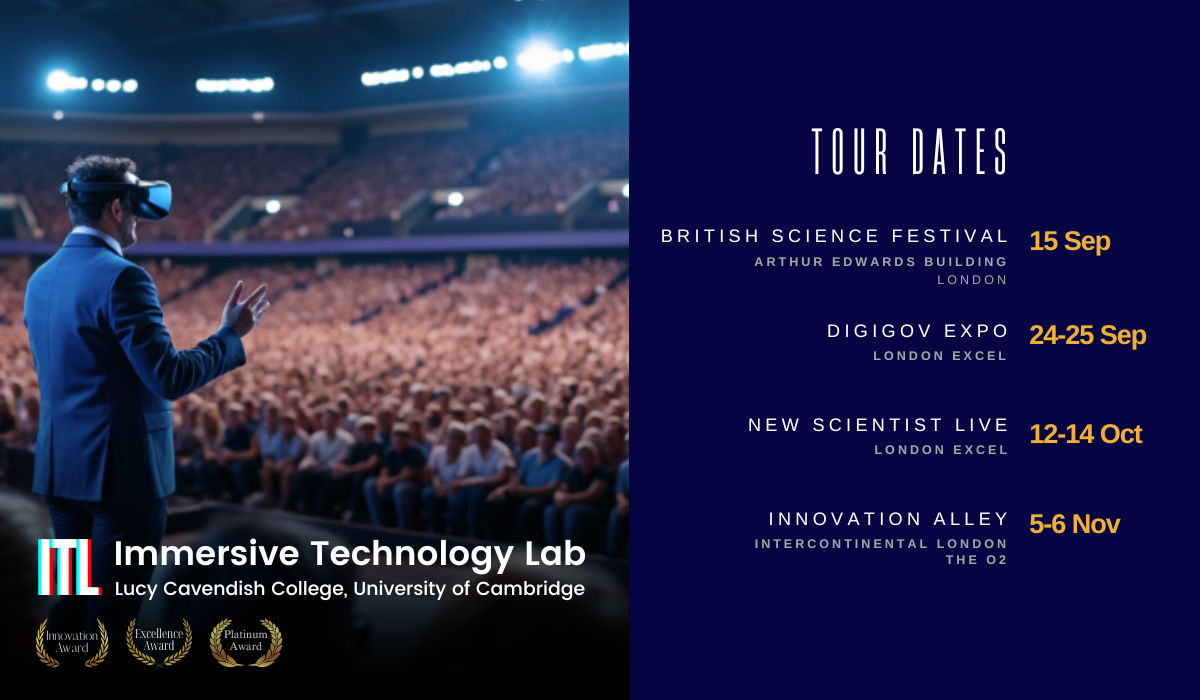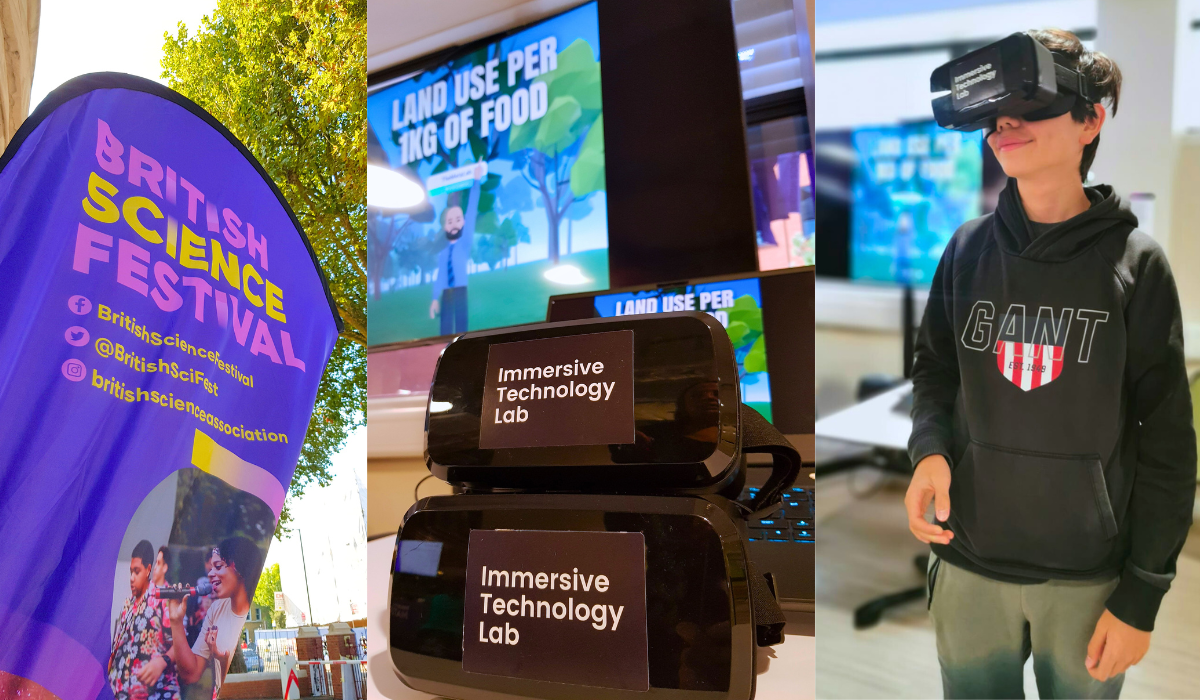A collaborative project with the University of East London explores how best to translate and visualise climate data.
Lucy Cavendish College’s multi-award-winning Immersive Technology Lab is currently on tour. Last month, it featured in a pioneering exhibit at the British Science Festival.
The exhibit was part of their project titled Making the Invisible Visible.
The project is a response to the fact that it can be challenging to communicate climate change to the general public: the terminology can be confusing, the way in which we measure emissions can be non-intuitive, and there is a range of complicated psychological barriers. The danger is that climate change can appear distant, insurmountable, or worse still, non-existent. A key part of the challenge is that with the human eye, we cannot see the accumulation of greenhouse gases in our atmosphere. As a result, the lab is leveraging emerging technologies to better translate and visualise emissions data; it is on a mission to make the invisible visible.
The British Science Festival exhibit was a particularly special event because it involved a collaboration between the University of East London (UEL) and Lucy Cavendish College which facilitated the unique combination of both hands-on physical experiences as well as cutting-edge virtual reality experiences. Both groups used open-access datasets from Our World In Data relating to the environmental impact of food.
From UEL, Dr Renata Brandão’s stand leveraged a trending bottle game that went viral on TikTok. The game involves rearranging bottles of coloured liquids to match the correct hidden order.

In Dr Brandão’s version, the liquid in the bottles corresponded to the greenhouse gas emissions from different food products.
From Lucy Cavendish College, Dr Chris Macdonald and Flavia Bartoletti’s stand featured multiple virtual reality experiences, where participants could, for example, climb greenhouse gas emissions, or traverse land use data.
Both methods of data visualisation were very well received and they not only helped to simplify and visualise the data but also made the data more interactive which facilitated engagement, comprehension, and recall. Having both stands side-by-side allowed participants to play with the same dataset from different perspectives.
Flavia Bartoletti says, “It was incredibly rewarding to see how people engaged with both the physical and virtual reality experiences. Being able to visualise or 'climb' emissions data and 'walk through' land usage statistics gave them a tangible sense of the scale of environmental impact in a way that traditional charts and graphs cannot. The response was incredibly positive.
Dr Chris Macdonald's research is inspiring, and I was delighted to help with the tour. It was a privilege to see how this innovative technology makes such a powerful impact on people, allowing them to grasp climate data in a more immersive and accessible way.
Thank you to Dr Renata Brandão for collaborating with us. And thank you to the British Science Festival for hosting the first stop of our tour”.

To find out more, contact Lab Director, Dr Chris Macdonald




